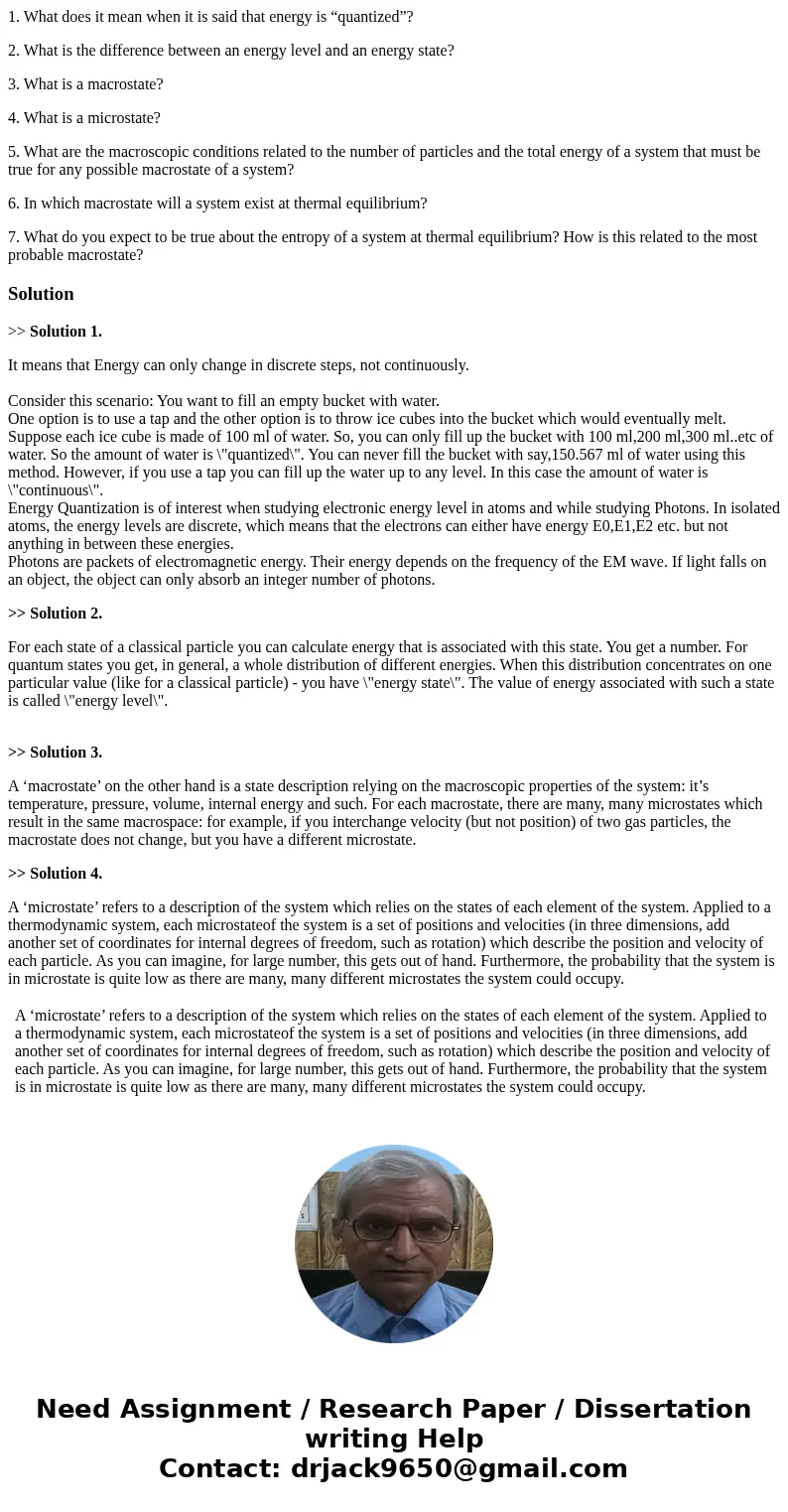1 What does it mean when it is said that energy is quantized
1. What does it mean when it is said that energy is “quantized”?
2. What is the difference between an energy level and an energy state?
3. What is a macrostate?
4. What is a microstate?
5. What are the macroscopic conditions related to the number of particles and the total energy of a system that must be true for any possible macrostate of a system?
6. In which macrostate will a system exist at thermal equilibrium?
7. What do you expect to be true about the entropy of a system at thermal equilibrium? How is this related to the most probable macrostate?
Solution
>> Solution 1.
It means that Energy can only change in discrete steps, not continuously.
Consider this scenario: You want to fill an empty bucket with water.
One option is to use a tap and the other option is to throw ice cubes into the bucket which would eventually melt. Suppose each ice cube is made of 100 ml of water. So, you can only fill up the bucket with 100 ml,200 ml,300 ml..etc of water. So the amount of water is \"quantized\". You can never fill the bucket with say,150.567 ml of water using this method. However, if you use a tap you can fill up the water up to any level. In this case the amount of water is \"continuous\".
Energy Quantization is of interest when studying electronic energy level in atoms and while studying Photons. In isolated atoms, the energy levels are discrete, which means that the electrons can either have energy E0,E1,E2 etc. but not anything in between these energies.
Photons are packets of electromagnetic energy. Their energy depends on the frequency of the EM wave. If light falls on an object, the object can only absorb an integer number of photons.
>> Solution 2.
For each state of a classical particle you can calculate energy that is associated with this state. You get a number. For quantum states you get, in general, a whole distribution of different energies. When this distribution concentrates on one particular value (like for a classical particle) - you have \"energy state\". The value of energy associated with such a state is called \"energy level\".
>> Solution 3.
A ‘macrostate’ on the other hand is a state description relying on the macroscopic properties of the system: it’s temperature, pressure, volume, internal energy and such. For each macrostate, there are many, many microstates which result in the same macrospace: for example, if you interchange velocity (but not position) of two gas particles, the macrostate does not change, but you have a different microstate.
>> Solution 4.
A ‘microstate’ refers to a description of the system which relies on the states of each element of the system. Applied to a thermodynamic system, each microstateof the system is a set of positions and velocities (in three dimensions, add another set of coordinates for internal degrees of freedom, such as rotation) which describe the position and velocity of each particle. As you can imagine, for large number, this gets out of hand. Furthermore, the probability that the system is in microstate is quite low as there are many, many different microstates the system could occupy.
| A ‘microstate’ refers to a description of the system which relies on the states of each element of the system. Applied to a thermodynamic system, each microstateof the system is a set of positions and velocities (in three dimensions, add another set of coordinates for internal degrees of freedom, such as rotation) which describe the position and velocity of each particle. As you can imagine, for large number, this gets out of hand. Furthermore, the probability that the system is in microstate is quite low as there are many, many different microstates the system could occupy. |

 Homework Sourse
Homework Sourse